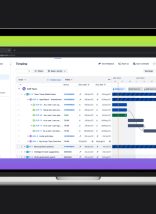When cleaning my house, I tend to apply the “good enough” method. Sure, there is a pile of junk crammed into the closet, but the floor is cleared. True, the drawers are stuffed with balls of clothing, but at least I can say that the laundry is done. OK, something clearly smells amiss in the bathroom, but that’s why we have Febreze. The house is still presentable. However, if the house isn’t clean, I’m reluctant to invite guests to my home. It can be hard to even relax in my own environment. If I can see the problems, I know that others can see them as well. I’m aware that I am not presenting my best self. It’s good enough, but nowhere close to what it should be—and too many websites are the same way.
The website for your company is its home. Customers come and visit when they want to know more about what you have to offer. It is the best presentation of who you are as a company and as a service provider. Is your website in need of more attention and care? Have you realized that you’ve been settling for ‘good enough’? If the answer is a grimaced ‘maybe’ while your eyes dart nervously around the room, odds are your site would benefit from a deep clean or redesign.
There are many clues to look for when deciding if a redesigned site is right for you. The ‘good enough’ mentality can easily sweep these clues under the rug, delaying the change necessary for your site to truly thrive. Let’s take a deep breath and look under that rug, shall we?
Clue #1 – Your visitor traffic is plateauing or declining.
Growth rarely comes from routine. As consumers receive information from an ever-widening variety of platforms, it can be harder to grab and/or maintain their attention. If the numbers show that users are indifferent to your site or not passing the word around about their experience, odds are your site has become old news.
“How can that be?” you may ask. “We add new content regularly and promote our site where all of the cool kids hang out online.” While these efforts are not bad ideas, they can’t make up for a site design that fails to engage your users. Your stellar new content can’t be appreciated by someone who has already decided that the site isn’t worth their time.
The solution is a new effort to make your digital home more welcoming and engaging. Use Google Analytics to see how visitors enter your site, where they spend time, and which pages drive them to leave. While monitoring your site’s traffic, pay specific attention to visits via mobile devices. The number of people who will first encounter your site on their small screens increases every year. Retaining these customers is crucial to growth. Design a responsive site that meets these needs.
Clue #2 – Your site makes customers and employees sad.
- “I tried to use your website and I felt like I was lost in a labyrinth”
- “While waiting for your page to load, I was able to read all of ‘War and Peace’”
- “When I look at your site’s design, my eyes hurt and I need to visit eyebleach to wash away the pain.”
Are you regularly receiving feedback of this nature? If your website is only inspiring agony and gloom, it’s time for a redesign. Our homes can be a physical indicator of who we are personally. Like a home, your website gives customers a preview of what to expect from working with you.
Accessibility is also vital to the success of your company and you want your website to be welcoming to everyone. It should also be a priority. Section 508 regulations have been in effect since January 2018. That means a specific level of accessibility functionality is now the law. Failure to comply could lead to significant lawsuits. What do we mean when we talk about these kinds of updates? Common accessibility features include meta descriptions for images, captions for videos, and other user-friendly design additions. These features are helpful for anyone visiting your site.
When considering your site redesign, focus on what users complain about most and use this as a guide. Is the look off-putting? Are users struggling to navigate their way through the site? Is the general experience tedious? These issues could be caused by a variety of culprits. Poorly-optimized images, clunky coding, and slow loading can all be detriments to your site. One of the best ways to boost your site’s performance is by implementing a Content Delivery Network (CDN). This will cache your content and images ahead of time.
Clue #3 – The technical foundation of your site is old.
New, sharper programming is being created daily, providing better platforms for websites to be built on. If your software is outdated, it will inevitably cause your site to be slower, less professional, and vulnerable to cyberattacks.
Adobe Flash is an excellent example of ‘good enough’ web technology. While Flash may be keeping your website afloat, this technology is dated and will eventually leave you in the lurch as new browsers (including Safari and Chrome) stop supporting Flash. Websites still depending on Flash can also be unsafe for both the company and consumers. Flash’s programming has already proved itself a high security and performance risk.
Dated software can be a turn off, aesthetically, for potential visitors. If the interface of your web applications still looks like Windows XP, your site is begging to be updated (something that even Clippy, the talking paper clip, could tell you). Consumers will be less likely to engage with a site that comes across as amateurish or neglected.
Clue #4 – Your website design has not changed in a good long while.
Like it or not, we live in a fast-paced culture of change that is consistently adjusting and growing. There is no better representation of this culture than the internet. Of all the mediums at our disposal, the internet remains the most fluid. Unlike print or video, internet ideas and trends constantly reinvent and update themselves from week to week.
Your customer base is familiar with this kind of rapid change. They will not be put off by the release of a new website design— they expect it. In fact, an unchanged website could inadvertently communicate the company’s perceived lack of interest in keeping up with the modern state of the internet. A site redesign demonstrates your ability and desire to meet the evolving needs of your users.
Make Your Website a Happy Home
Your website can be better than ‘good enough’. When all of the clues point to some much-needed deep cleaning, take the plunge and begin planning your redesign. The process may seem daunting, but with the right team and a strong vision, your internet home can become a place to take pride in, and a welcoming open door for everyone. If you need inspiration, feel free to browse some of our favorite redesigns and we will be happy to tell you how we created them.





